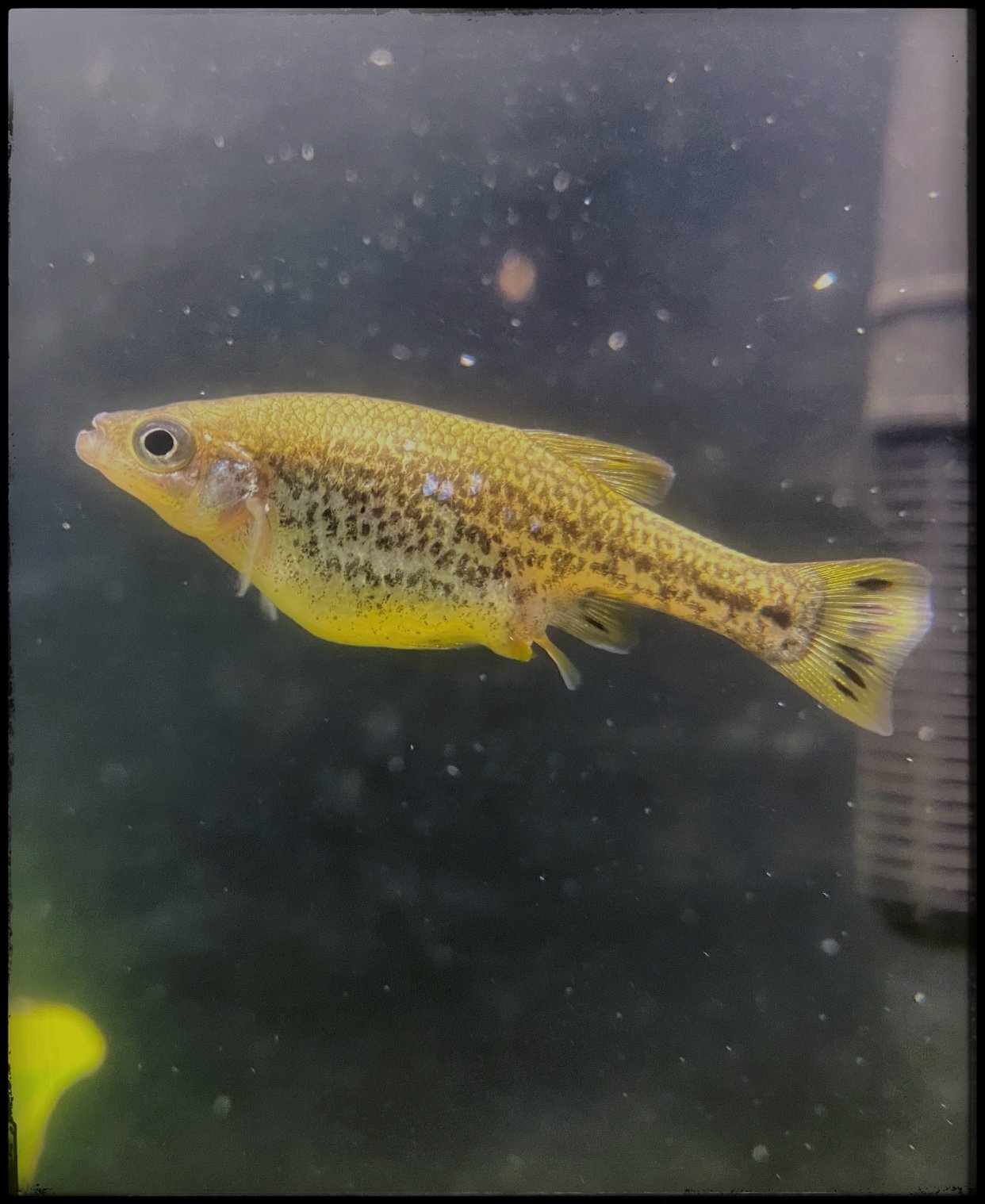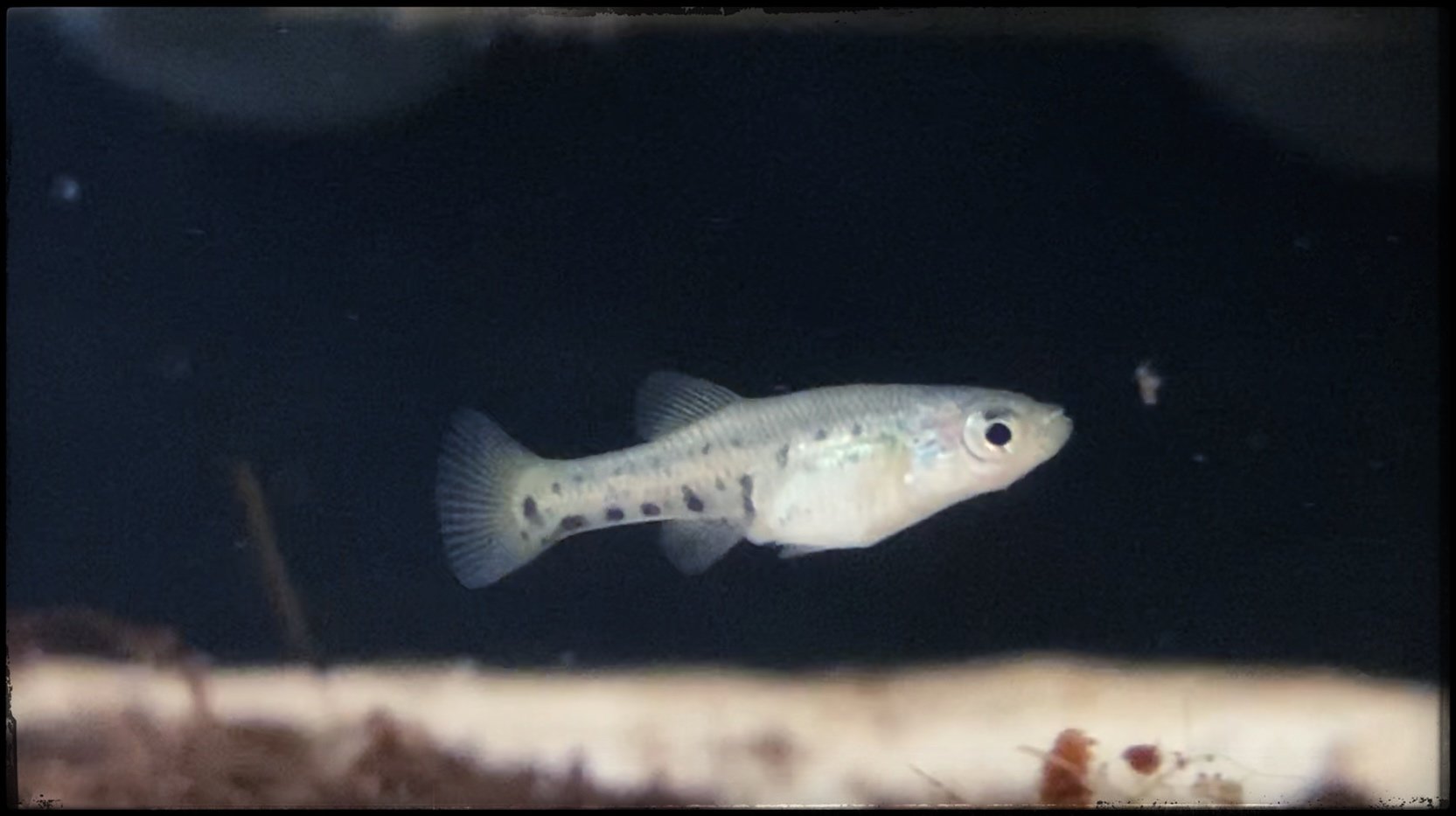Expanded fish CaRE
Ameca splendens- Butterfly Splitfin- Butterfly Goodeid-
Kingdom: Animalia
Phylum: Chordata
Class: Actinopterygii
Order: Cyprinodontiformes
Family: Goodeidae
Genus: Ameca
Species: Ameca splendens
Care level-Moderately Experienced to Experienced. This fish species is on the brink of extinction and is currently on the CARES list.
Temperament and Behavior- Peaceful with like species, but not with other fish species.
Lifespan- 3 years
Size- Up to 3.5 inches
Diet- Omnivores
Feeding is an entertaining time to watch these fantastic fish. They are swift and agile eaters, and food usually does not last long in the aquarium. This fish species is not picky. Feeding a wide variety of high-quality foods that are rich in proteins is a must. Offer a mix of fish foods: Krill flakes or granules example Fluval Bug Bites. They also enjoy frozen and live foods like blood worms or frozen baby brine shrimp. Feeding smaller amounts a couple of times a day is best.
Minimum Tank Size- 20L(long)-30+gallons
pH 6.0-8.0
Water Hardness- Hard Water
Temperature-70-76-degree Fahrenheit - Heat not recommended
Tank-mates- Species only tank is highly recommended to improve this fish species' well-being. Keep in a small group in a tank of their own. Every time I tried to add tank mates, they did not do well. I have not succeeded in adding tank-mates. Even though this is a one-species aquarium, there have been new additions by means of offspring. On the positive side, they seem to leave their fry (offspring) alone, and it's been excited watching the fry grow.
Recommended Group Size- I keep a small group, but you can start with just a pair. Easily breed.



Males v. Females- Sexually dimorphic, you can usually see the differences between males and females just by looking. However, there are also a few other differences between the two sexes. Females are larger in size but duller in color, yet still beautiful. Females also have black speckled coloration to their tailfin. Males of this species are smaller and strikingly attractive. Both sexes have a small, black stippled pattern with outstanding reflective quality to their scales. The males stand out over the females, with a stronger eye-catching yellow tint to the caudal (tail) fin. This yellow coloration is where the Butterfly Goodeid name derives. As well as a thicker black stripe on their caudal fin.
Butterfly Goodeid, known by their scientific name, Ameca splendens, are livebearers but slightly different from the others. Females don't seem to have gravid spots when pregnant, and they also do not hold sperm from the male. Females will have to mate and be inseminated by males before each pregnancy. Due to this fact, female Ameca splendens are viviparous, meaning they have umbilical cords that you may see after birth. This umbilical cord is called trophotaenia responsible for the transfer of nutrients between the mother and the developing young inside her. Male Ameca splendens are different from other livebearers. Livebearers typically process a gonopodium, a modified anal fin used for insemination. Males of this species have an andropodium; a modified anal fin notched at the end.
Fry- Gestation takes about 55-60 days, and females usually can have up to 30 fry at a time. A few broods of fry have been born in the fish room. This species' fry is noticeably more significant in size than other livebearers. Females seem to drop smaller amounts of fry than Guppies, but Ameca Splenden fry is significantly larger at birth. Offspring is silverish in color, tiny in stature, with black dots. Usually, offspring take time to develop a color pattern. Ameca splendens, on the other hand, the color pattern is prominent at birth already with a beautiful spot pattern.
Tank Setup- This endangered species seems to enjoy filter flow, nothing too heavy, but a moderate amount of flow. In the 55-gallon aquarium, I keep this species in a dirted tank with a sand cap—heavily planted full of Vallisneria and a Madagascar plant.






